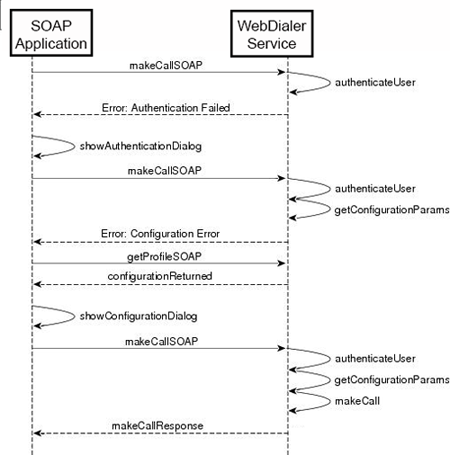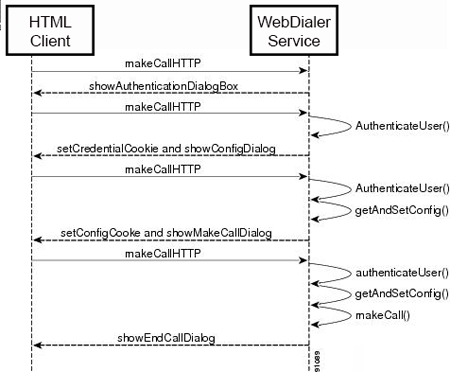What is WebDialer?
The Cisco WebDialer Service is a part of the overall Unified Communications Manager (Unified CM) server installation. It allows users to make Click-to-Dial (C2D) calls on a corporate directory page or as a part of a custom desktop application. The user just clicks on a hyperlinked number to ring the desired number or extension. The API handles other common (C2D) functions like performing searches and getting phone and user information.

Cisco WebDialer Service
WebDialer supports Cisco IP phones that run Skinny Client Control Protocol (SCCP) and Session Initiation Protocol (SIP) using Cisco Computer Telephony Integration (CTI). The Cisco WebDialer service allows Unified CM users in a specific cluster to make and complete calls, as well as access their phone and line configuration.
Any phones supported by Unified CM CTI (TAPI or JTAPI) can be used with WebDialer. Click here for a list of supported phones.
There are two interfaces developers can use for their Cisco WebDialer applications:
-
Cisco WebDialer SOAP API — This API uses SOAP over HTTPS for applications and
plug-in development. Developers can use the isClusterUserSoap interface to design multi-cluster
applications that require functionality similar to a Redirector Service.
The WebDialer API is simple and straight-forward. A standard call flow using the WebDialer API looks like this:- A makeCallSoap request is made by the application to the Cisco WebDialer Service
- The Cisco WebDialer Service authenticates the user and verifies the user’s configuration.
- A success response is issued. i.e., the phone is dialed successfully, or an error message is returned.
The following activity diagram shows a more detailed call flow with error control factored in. It also shows some of the tasks the Cisco WebDialer Service handles for your application.

-
Cisco WebDialer HTML API — This API uses HTML over HTTPS allowing development
of web-based applications. Developers can utilize the Redirector Service to
locate a Unified CM cluster in response to a request made by a Cisco WebDialer User.
With this implementation, the typical programming details are handled primarily by the HTML Cisco WebDialer Service. In the best case scenario a standard call flow using the Cisco WebDialer HTML Web Service would look something like this:
- A makeCall HTTP request is made when the user clicks a link to dial a phone or extension number from a client web page.
- The Cisco WebDialer Service authenticates the user and verifies the user’s configuration.
- A success response is issued. i.e., the phone is dialed successfully, or an error message is returned.
The following activity diagram shows a more detailed call flow with error control factored in. It also shows some of the tasks the Cisco WebDialer Service handles for your application.


